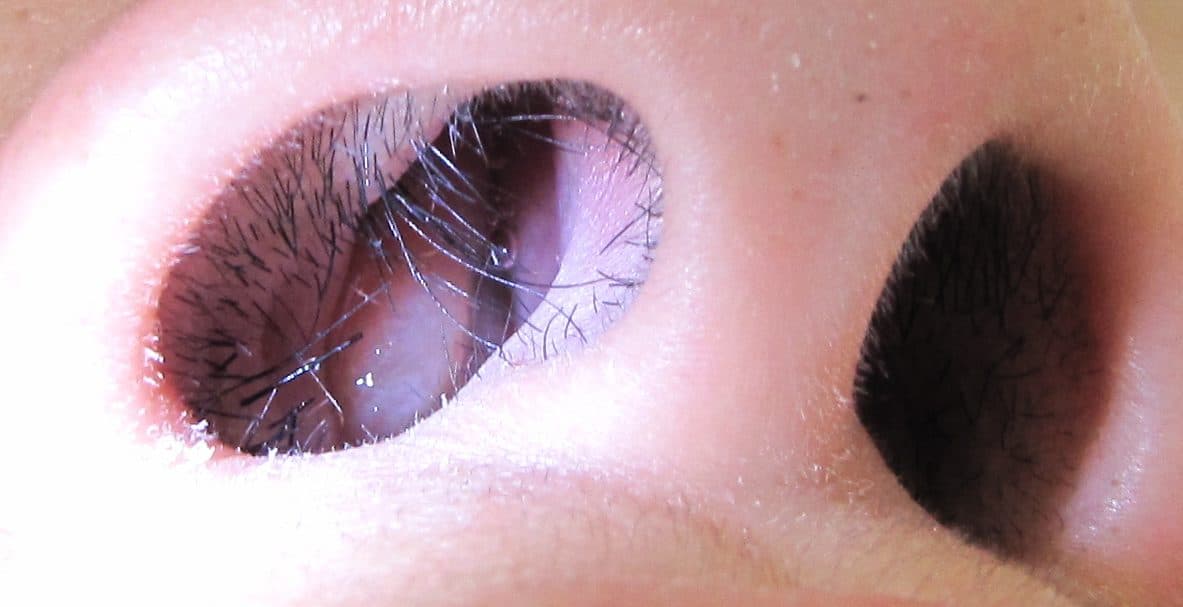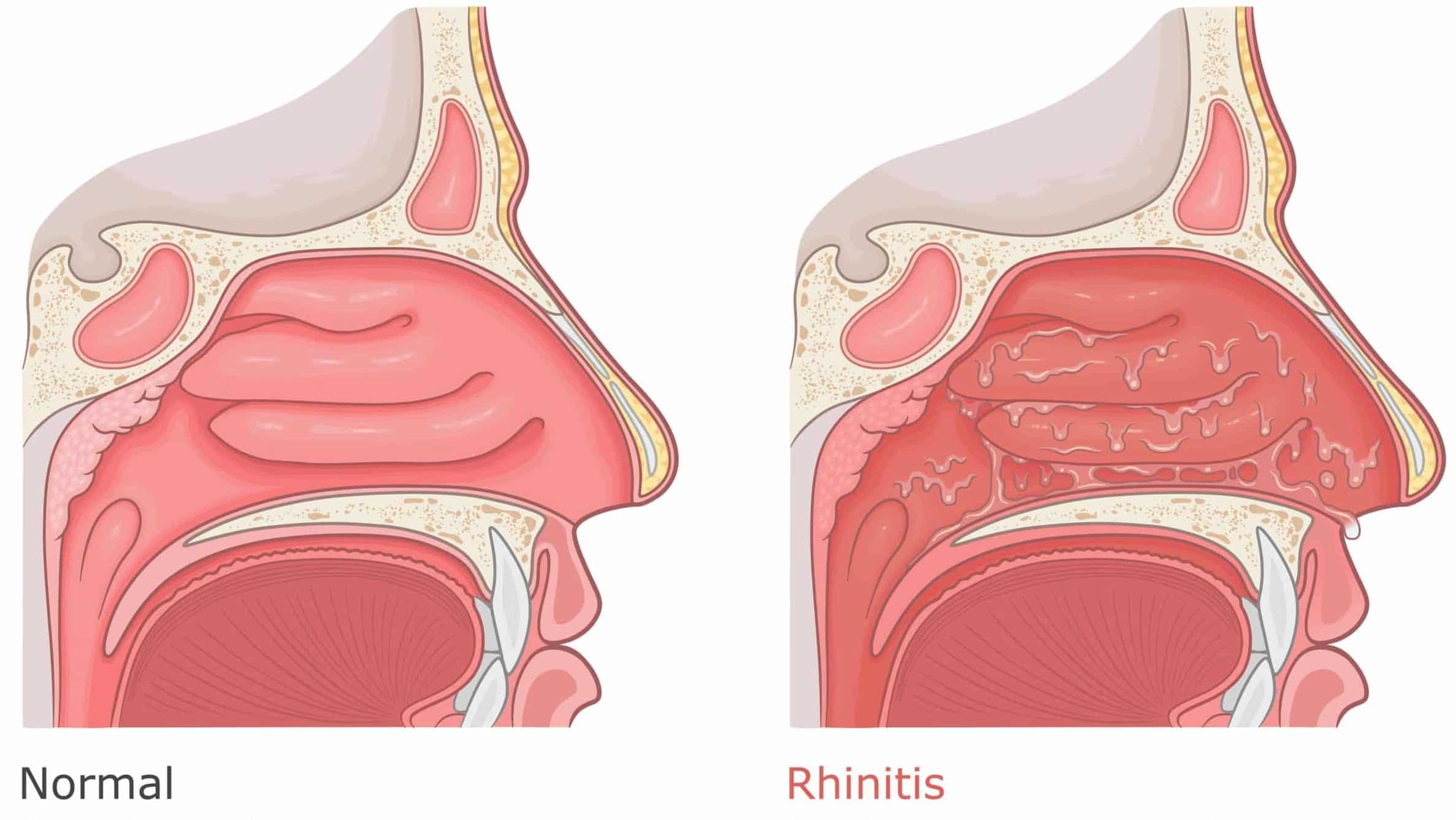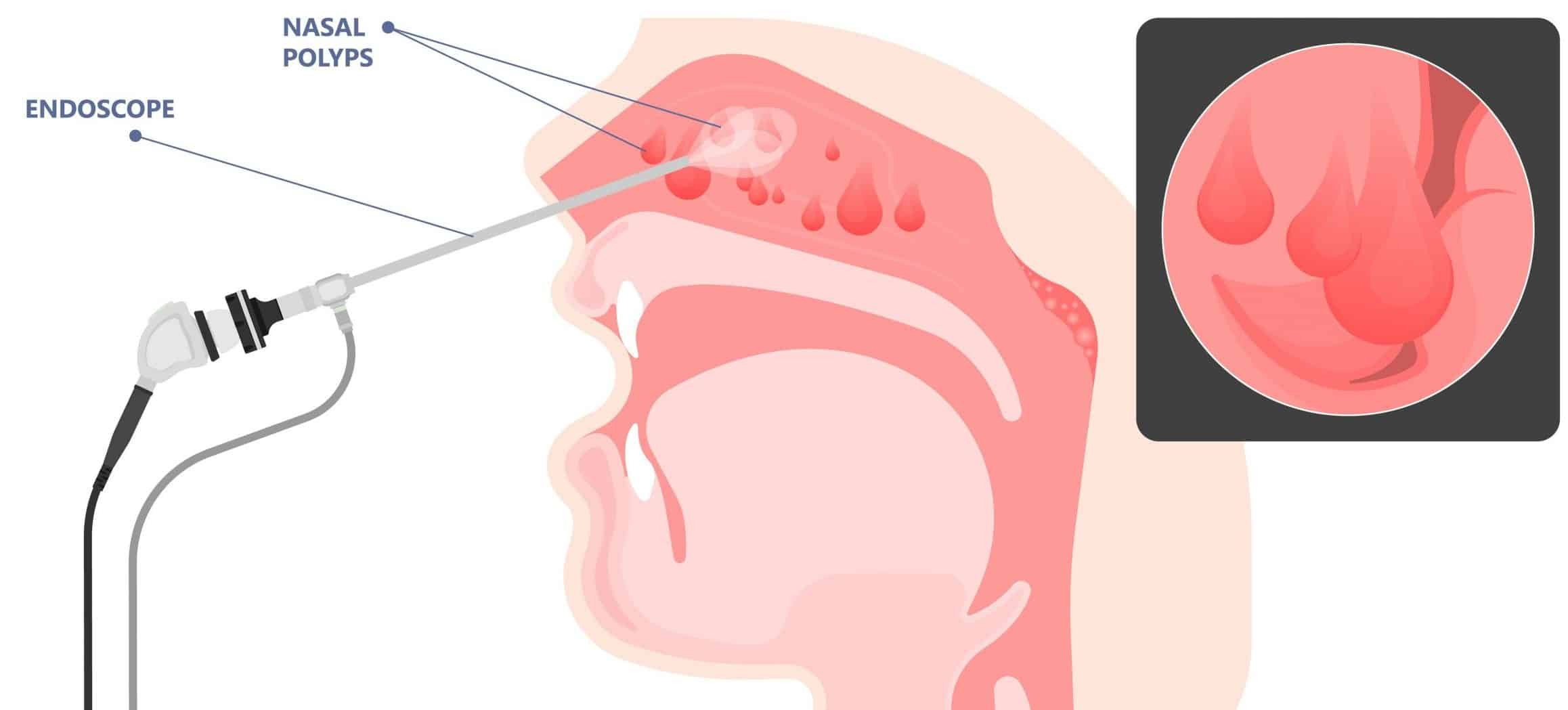Introduction
Rhinosinusitis is a relatively common condition, characterised by inflammation of the mucosal linings of the nasal passage and paranasal sinuses.
This article will focus on chronic rhinosinusitis (CRS), which refers to rhinosinusitis symptoms which last longer than 12 weeks. Its pathophysiology is complex, involving interactions between the dysfunctional nasal mucosa and environmental factors.
Previously, chronic rhinosinusitis was divided into that without nasal polyps (CRSsNP) or with nasal polyps (CRSwNP), however this has since been reclassified into Type 1 and Type 2 inflammatory patterns (type 2 being those with an allergy pattern).
Risk Factors
The main risk factors for chronic rhinosinusitis include asthma or atopy, aspirin sensitivity*, ciliary impairment (e.g. cystic fibrosis or primary ciliary dyskinesia), smoking, and immunosuppression.
Those with anatomical variations or mechanical obstruction, such as septal deviation, nasal polyps, or sinus hypoplasia, are also at increased risk of CRS.
*Patients with three diagnoses of chronic rhinosinusitis, aspirin sensitivity and asthma are known to have Samter’s triad, also known as Aspirin-Exacerbated Respiratory Disease (AERD)
Clinical Features
Symptoms of chronic rhinosinusitis* include nasal blockage (either obstruction or congestion), nasal discharge (either anterior or posterior discharge, including nasal drip), facial pain or pressure (usually unilateral over the maxillary or frontal sinus), and an altered sense of smell. Symptoms must be present for ≥12 weeks.
On examination, there may be tenderness or swelling in the maxillofacial area over the affected sinus. Rhinoscopy will reveal generalised mucosal swelling, mucopurulent (green/yellow) discharge, or nasal polyps (Fig. 2)
*Current guidelines state patients must have 2 or more of these symptoms for a diagnosis of CRS; in children, altered sense of smell is replaced with cough symptoms.
Differential Diagnosis
The main differential diagnoses for chronic rhinosinusitis include:
- Recurrent acute rhinosinusitis – consider if there is resolution of symptoms between episodes
- Malignancy – consider in cases of unilateral nasal polyposis, the presence of bloodstained discharge, or eye signs
- Foreign bodies – more common in children, and typically presents with nasal obstruction and discoloured unilateral discharge
Investigations
To make a formal diagnosis of chronic rhinosinusitis, nasal endoscopy is required. The presence of mucosal swelling, mucosal occlusion of middle meatus, or nasal polyps (most commonly seen around the middle meatus) are often seen in patients with CRS.
Mucosal changes within the ostiomeatal complex or sinuses on CT imaging will also meet the definition of rhinosinusitis (however CT imaging is only required if complications of CRS are suspected and in pre-operative planning)
Blood tests can be performed to check for raised IgE and eosinophils, to help determine the endotype of CRS.

Figure 2 – A nasal polyp, as observed on anterior rhinoscopy
Nasal Polyp Grading System
The clinical grading system for nasal polyps is called the Meltzer grading system (Table 1)
| Grade 0 | No nasal polyps |
| Grade I | Small nasal polyps confined within middle meatus |
| Grade II | Multiple nasal polyps occupying the middle meatus |
| Grade III | Nasal polyps extending beyond middle meatus |
| Grade IV | Nasal polyps completely obstructing nasal cavity |
Table 1 – Meltzer grading system for nasal polyps
Management
For mild disease, nasal saline douching and topical steroid spray should be trialled. Advice should be given to avoid any known triggers, smoking cessation (if relevant), and ensure good control of any associated conditions where possible (e.g. asthma.)
Those with moderate to severe disease will long term treatment with topical steroids and referral for consideration for surgery. A short course of oral steroids can be prescribed in cases of severe nasal polyps, which will then allow increased efficacy of topical steroids. In addition, the advent of biologics has become increasingly relevant in the treatment of CRS, especially in type 2 CRS.
In patients with acute-on-chronic rhinosinusitis, who are especially unwell with sepsis symptoms, a course of oral antibiotics would be required to treat the acute infection.
Functional Endoscopic Sinus Surgery
The aim of Functional Endoscopic Sinus Surgery (FESS) is to remove any polyps that have formed and to open up the sinuses. This all can be done via an endoscope.
This will reduce obstruction, drain any collections of mucus, and allow topical treatments to reach all areas to prevent recurrence.
Complications of FESS include bleeding, infection, need for nasal packing, recurrence, orbital haematoma leading to visual loss, and injury to the anterior skull base leading to cerebrospinal fluid leak.
Complications
A mucocoele can develop in cases of CRS, were a collection of mucus in an epithelial-lined cavity forms, most commonly in the frontal sinus. Mucocoeles can erode bone and invade local structures such as the orbit and the brain.
Key Points
- Chronic rhinosinusitis which refers to inflammation of the mucosal linings of the nasal passage and paranasal sinuses with symptoms lasting longer than 12 weeks
- Diagnosis is clinical however flexible nasal endoscopy should be performed to assess for any polyps
- All cases of chronic rhinosinusitis should undergo nasal endoscopy
- Treatment of chronic rhinosinusitis is dependent on the severity of symptoms, with topical steroids, oral steroids, surgery and biologics being the mainstay of treatment


